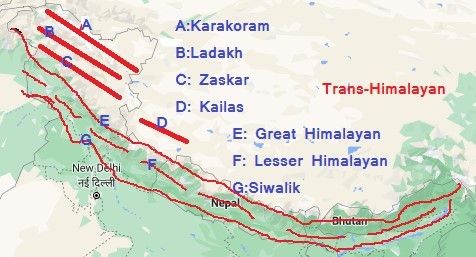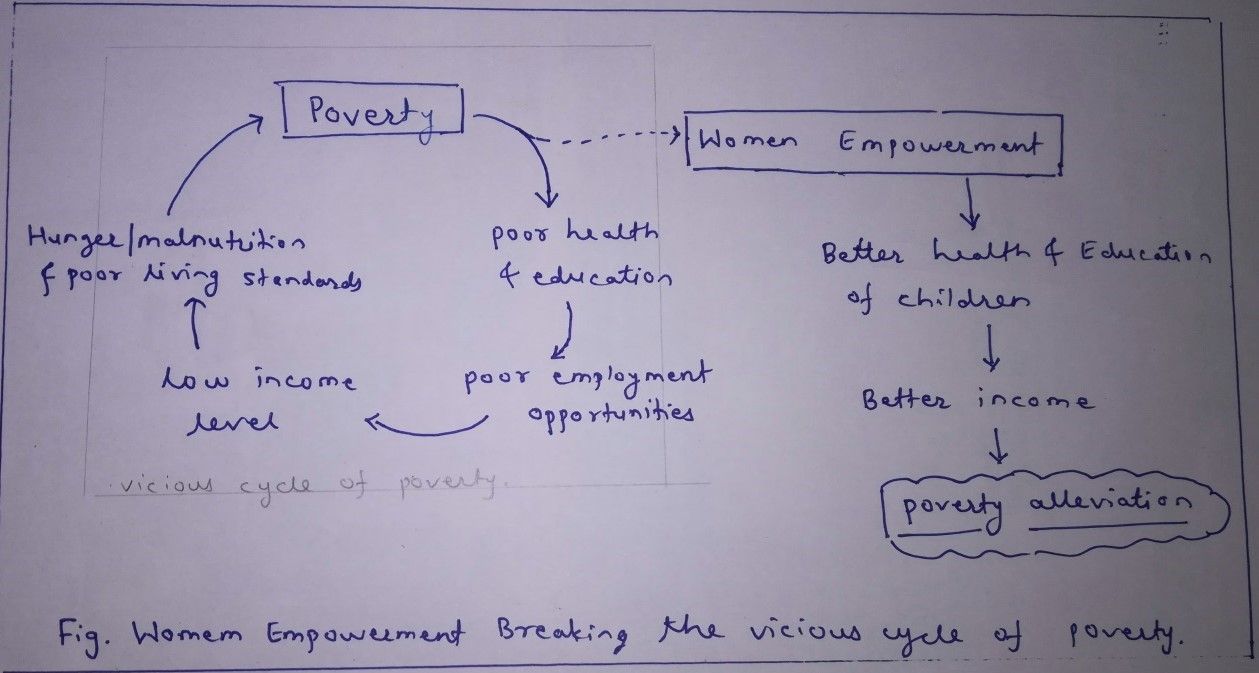Question-cum-Answer-Booklet
Model Solutions
- Discuss the geophysical characteristics of the Himalayan region. (10 marks)
- "Women empowerment is the key to poverty alleviation." Discuss. (15 marks)
Model Structure 1.
Introduction
● The Himalayas are the youngest mountains in the world and are structurally folded mountains
Main Body
● Important geophysical characteristics of the Himalayan region are -
○ The most characteristic features of the Himalayas are their great height, complex geologic structure, snow capped peaks, large valley glaciers, deep river gorges, and rich vegetation.
○ Geologically the Himalayas are relatively young folded mountains and are still undergoing the mountain-building process
○ Series of several parallel or converging ranges. Division of Himalayas
- Shiwaliks or outer Himalayas
- Lesser or Middle Himalayas
- The Greater Himalayas
- The Trans-Himalayas – Tibetan Himalayas.
- The Eastern Hills – Purvanchal: A chain of hills in North-East India.
○ The ranges are separated by deep valleys creating a highly dissected topography [(of a plateau or upland) divided by a number of deep valleys].
○ The southern slopes have steep gradients and northern slopes have comparatively gentler slopes. [Scaling Mount Everest is less hectic from the northern side. But China puts restrictions so climbers take the steeper southern slopes from Nepal]
○ Most of the Himalayan ranges fall in India, Nepal and Bhutan. The northern slopes are partly situated in Tibet (trans-Himalayas) while the western extremity lies in Pakistan, Afghanistan and Central Asia.

○ The Himalayas are drained by 19 major rivers, of which the Indus and the Brahmaputra are the largest
○ The Himalayas, as a great climatic divide affecting large systems of air and water circulation, help determine meteorological conditions in the Indian subcontinent to the south and in the Central Asian highlands to the north.
○ The mountain ranges obstruct the cold, dry air from the north into India in winter. They also force the monsoonal winds to give up moisture, causing heavy rain and snow on the Indian side but arid conditions in Tibet.
○ Himalayan vegetation can be broadly classified into four types—tropical, subtropical, temperate, and alpine—each of which prevails in a zone determined mainly by elevation and precipitation.
Model Structure 2.
Introduction
● As Swami Vivekananda has said, “It is impossible to think about the welfare of the world unless the condition of women is improved. It is impossible for a bird to fly on only one wing.” Thus it can be argued that women empowerment is sine qua non for poverty alleviation.
Main Body
Women Empowerment and Poverty Alleviation
● Women Empowerment can break the vicious cycle of poverty.

● Women constitute almost half of the country's population; thus improving their condition can immensely contribute to poverty alleviation.
● An empowered women has an ability to empower two families
- Family of orientation
- Family of procreation
● Empowered women will play a decisive role as leaders, thereby influencing the policies in favour of social welfare.
● Women’s empowerment plays a catalytic role towards the achievement of transformational economic, political and social changes required for sustainable development.
● Many studies suggest that women typically spend their income on food and healthcare for children, which can dramatically help in poverty alleviation.
- It is in sharp contrast to men, who spend a higher proportion of their income for personal needs.
● Women empowerment → Access to family planning and maternal health services→ lower fertility rate→ Equitable distribution of resources → Poverty alleviation. How to achieve it?
● Social- Developing human capital
○ Health- Access to family planning & maternal health services, delaying first child, improving MMR & IMR, nutritional security, etc.
○ Education- It is the major tool for eliminating poverty. Educated women are more sensitive toward their children's education and contribute more to their development.
● Economic
○ Skill development of women. Eg. Barefoot college in Rajasthan
○ Financial inclusion and financial literacy. (PM-Jan Dhan Yojana)
○ Leveraging the power of SHGs- Microfinance, women entrepreneurship, leadership development.
○ Agriculture: Empowering women farmers through- (i) extension services, (ii) training and education, (iii) Land ownership to women, etc.
○ Equal wage for equal work. (Article 39)
● Political
○ Equal representation- from Panchayats to Parliament (only 14% women MPs are there in current Lok Sabha- ADR report)
○ Dealing with real time issues such as ‘sarpanch pati’.
Conclusion
● Poverty and empowerment issues cannot be adequately addressed where only half of the population is positively and actively engaged, therefore actively engaging women as the driver for bringing positive change and eliminating poverty from the country is the key to focus on.